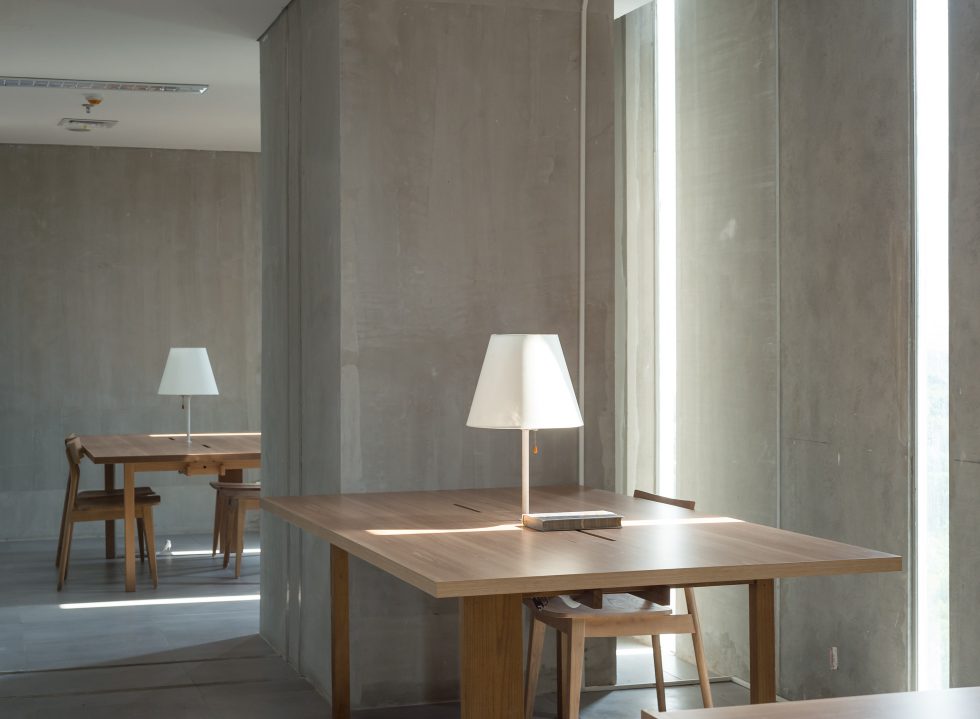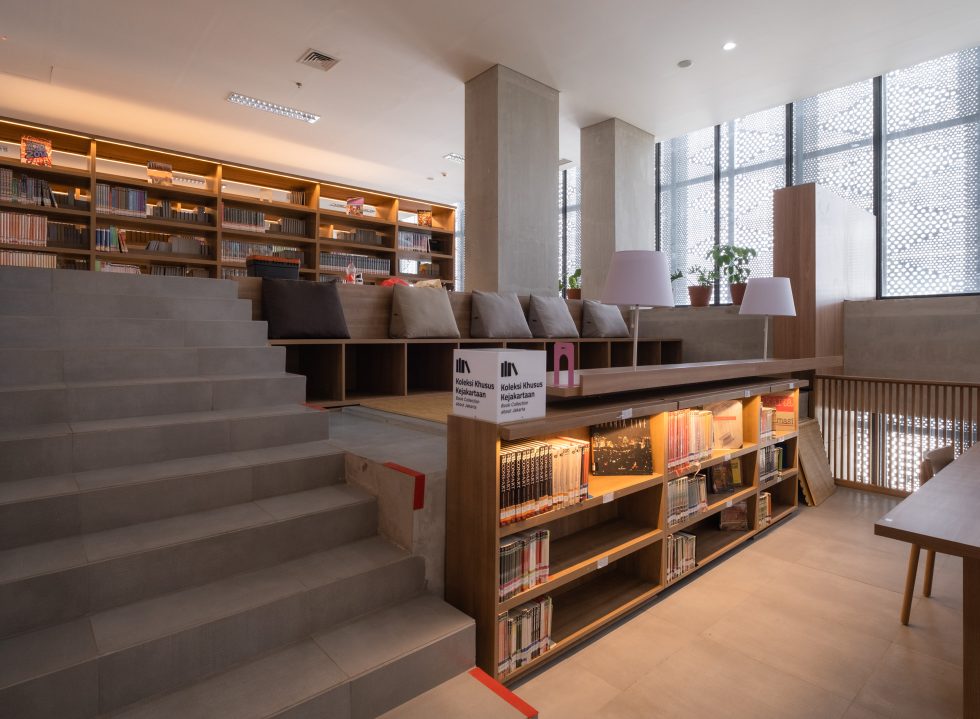It’s an exciting time for Taman Ismail Marzuki (TIM), the city’s iconic art, cultural and science centre, which had undergone a revitalization in 2019 with architect Andra Matin at the helm. The main building—which finished construction this year and has slowly reopened in stages since last month—was designed to include spaces from an art gallery and retail stores to lodgings for artists. One that has garnered an impatient buzz is Perpustakaan Jakarta Cikini, a three-story public library set on the building’s fourth floor.
Unlike what many have ascribed libraries in the city to be—serious, deafeningly quiet and closed off from the public—Perpustakaan Jakarta Cikini grabbed this opportunity to present something different. Before 2019, the library itself seemed ‘hidden’ from the public, where it didn’t have enough pull to draw in visitors outside students, researchers, and academicians. Irvan Juliansyah, a public service administrator at DISPUSIP (Dinas Perpustakaan dan Kearsipan), observed how it used to be a place where people would loiter around in before they go to the Planetarium and Observatorium Jakarta located within the same complex; other times, it would be their first time knowing such library existed.
The perception that a lot of people don’t go to libraries is also not far-fetched, considering that 6 in 10 Jakartans have never stepped foot in one, according to a 2019 survey by DKI Jakarta. With this revitalization, Perpustakaan Jakarta Cikini sets off a new ambition—a new face that greets communities through open, accessible design and interactive facilities where people can gather, access and harvest information while learning and growing together.
Dominated in a warm tone of wood and concrete, the library has taken advantage of its three floors and sweeping size, sectioning them to encompass its big collection of over 100,000 books of varied genres and archives, various facilities and common areas. There are stairs that tower to the sixth floor (which may already be visitors’ resorted photo spot), seamlessly integrated with reading tables and racks that display specialised collections, from books about Jakarta to curated titles on art, literature and culture.
Each floor dedicates rooms for gatherings and activities to take place. There are both open and private reading rooms, discussion booths, a broadcast room for podcast sessions, a children’s area as well as an inclusive room where the visually impaired can access braille materials—all of which members of the library can freely reserve and access.
Despite being separate entities, the library also shares floors with Pusat Dokumentasi Sastra Hans Bague Jassin, a documentation institution that stores and manages a collection of 3000 plus books, diaries, magazine clippings, and literary works that belonged to the notable Indonesian literary critic. Some handwritten poems by literary greats from Chairil Anwar to W.S Rendra are stored here alongside well-preserved original copies of books that had made their way from the 1800s.
As shown from the number of people who immediately applied for the library membership, as well as those registering to check out the place (currently it’s a must before visiting), the takeaway is clear: many seemed to be hungry for a library of this scale and style. And while the buzz surrounding Perpustakaan Jakarta Cikini—and Taman Ismail Marzuki as a whole—has been inspiring, a sense of consideration should also follow. As Irvan hopefully concluded: “The library has provided this well-designed space with free access to many facilities. In turn, the hope is for visitors to make great use of this space and take care of it as well.”
Click here to register for a visit and information about membership.






































